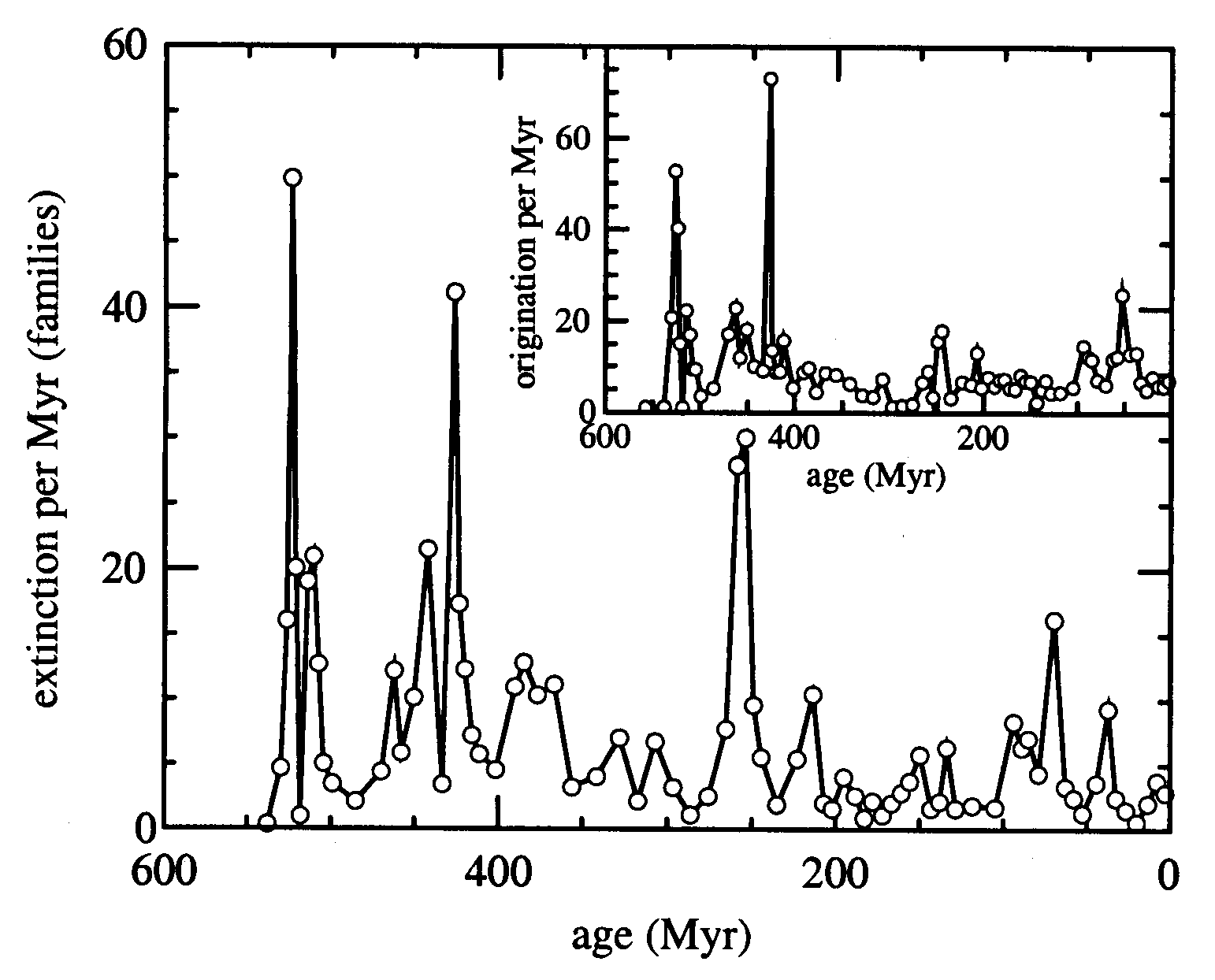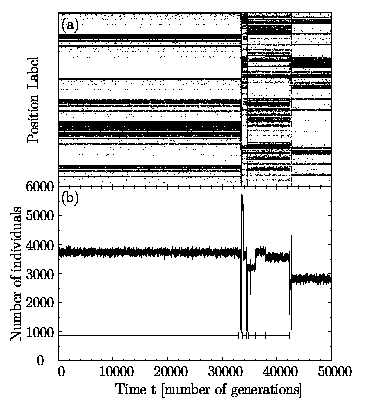

The fossil record provides invaluable material for those who seek insight into the history of life on earth, and in the last two decades or so, fossil data have been collected of sufficient quality to allow statistical investigation of large-scale patterns in the extinction and origination record. Two main features observed are the hierarchical organisation of life expressed by the phylogenetic tree and the intermittent nature of evolutionary dynamics. Explaining these macro-evolutionary patterns as collective emergent properties of systems with many interacting degrees of freedom, whether these be single individuals or `species', is an alluring challenge for researchers with a background in statistical physics.


The aim of our work is to understand how co-evolutionary interactions determine the behaviour of an ecology in a stable environment. We consider a simple model of ecological evolution, the Tangled Nature model, defined at the level of individuals and short time scale, and derive the long time behaviour of the ecology.
In the Tangled Nature model, we introduce the essential features of a population on microevolutionary time scales, i.e., reproduction, with heredity and variation, and natural selection. Each organism reproduces with a rate that is linked to the individuals' genome and depends on the composition of the living population in genotype space.
The model proves to reproduce qualitatively observed macroevolutionary phenomena. The Tangled Nature model spontaneously displays an emergent structure which we identify with an ecology of coexisting organisms. The dynamics is characterised by long periods of stasis interrupted by bursts of activity which modify the living organisms at all scales, that is, extinctions are local as well as able to affect the entire ecology. Furthermore, the long term behaviour of the dynamics reveals that the ecology becomes gradually better adapted and more complex. The model defines an error threshold for the mutation rate which can be understood in terms of the two dynamical modes of the system. Finally, we show that the asexual and sexual version of the model are qualitatively similar.

The research indicates that a key issue to be further examined is the nature of the mutual relationships between co-evolutionary species.
PUBLICATIONS